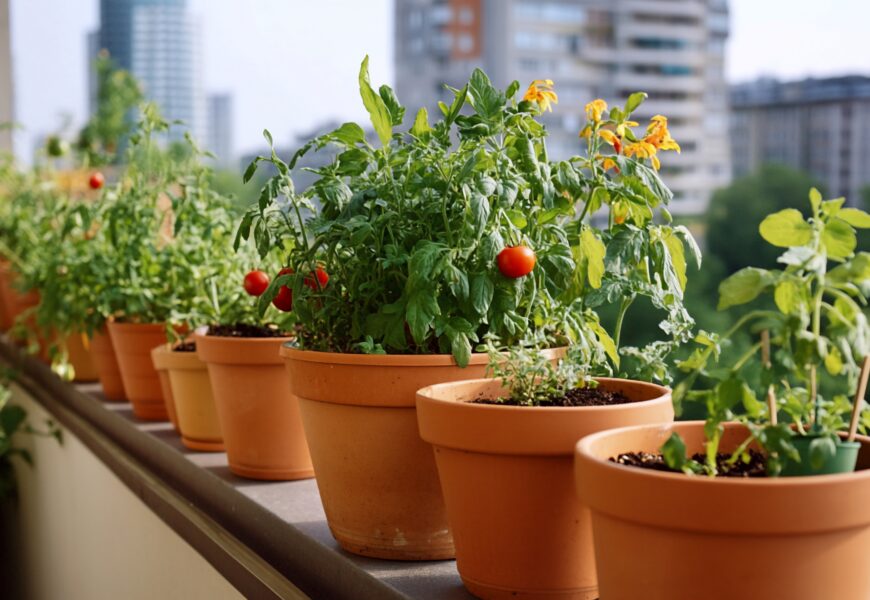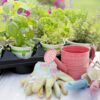Don’t let limited space hold you back from growing your fresh vegetables! Whether you have a tiny balcony, a small patio, or a sunny windowsill, you can create a productive vegetable garden that fits your space perfectly. Let’s explore how to maximize your growing area and enjoy a bountiful harvest.
Planning Your Small Space Garden
Success starts with smart planning. Consider these factors:
- Available sunlight hours
- Weight restrictions (especially for balconies)
- Access to water
- Local climate conditions
- Space for movement and maintenance
Best Vegetables for Small Spaces
Vertical Growers
- Pole beans
- Climbing peas
- Cucumbers
- Cherry tomatoes
- Small-fruited squash
Compact Varieties
- Bush tomatoes
- Mini bell peppers
- Leaf lettuce
- Baby carrots
- Radishes

Container Selection and Preparation
Choose containers that match your vegetables’ needs:
Deep-Rooted Vegetables (12+ inches)
- Tomatoes
- Peppers
- Eggplants
- Root vegetables
Shallow-Rooted Vegetables (6-8 inches)
- Lettuce
- Herbs
- Radishes
- Green onions
Space-Saving Growing Methods
Vertical Growing Systems
- Trellises
- Wall-mounted planters
- String systems
- Garden towers
- Living walls
Container Combinations
- Companion planting
- Square foot gardening
- Tiered planters
- Hanging baskets
- Window boxes
Essential Care Tips
Soil and Nutrition
- Use high-quality potting mix
- Incorporate slow-release fertilizers
- Top-dress with compost monthly
- Monitor soil moisture regularly
Watering Wisdom
- Install drip irrigation when possible
- Use self-watering containers
- Water deeply but less frequently
- Mulch to retain moisture
Light Requirements
- Position plants for maximum sun exposure
- Rotate containers as needed
- Use reflective surfaces to increase light
- Consider supplemental lighting
Maximizing Your Harvest
Succession Planting
- Plant new crops every 2-3 weeks
- Replace finished plants promptly
- Plan seasonal rotations
- Keep records of successful plantings
Smart Pruning
- Remove unnecessary growth
- Train vines efficiently
- Harvest regularly
- Remove spent plants
Season Extension Techniques
Spring
- Start seeds indoors
- Use cold frames
- Employ row covers
- Choose cold-hardy varieties
Summer
- Provide shade as needed
- Maintain consistent moisture
- Monitor for pests
- Support heavy fruit
Fall/Winter
- Use frost protection
- Choose cold-tolerant varieties
- Implement row covers
- Consider mini greenhouses
Common Challenges and Solutions
Space Optimization
- Use vertical space effectively
- Implement companion planting
- Choose compact varieties
- Practice succession planting
Environmental Control
- Monitor temperature
- Maintain proper airflow
- Control humidity
- Protect from extreme weather
Pest Management
- Inspect regularly
- Use companion planting
- Implement physical barriers
- Practice organic control methods
Advanced Tips for Success
Pollination
- Hand pollinate when necessary
- Plant pollinator-attractive flowers
- Ensure adequate air circulation
- Consider self-pollinating varieties
Time Management
- Create maintenance schedules
- Automate watering when possible
- Group plants by care needs
- Keep tools organized and accessible
Final Thoughts
Growing vegetables in small spaces requires creativity and planning, but the rewards are worth the effort. Start small, learn from experience, and gradually expand your garden as you become more confident. Remember that even the smallest space can produce an impressive harvest with proper care and attention.
Remember to:
- Start with easy-to-grow vegetables
- Plan your space carefully
- Maintain regular care schedules
- Celebrate your successes
- Learn from challenges
Your small space vegetable garden can become a productive and enjoyable source of fresh, healthy produce throughout the growing season.





